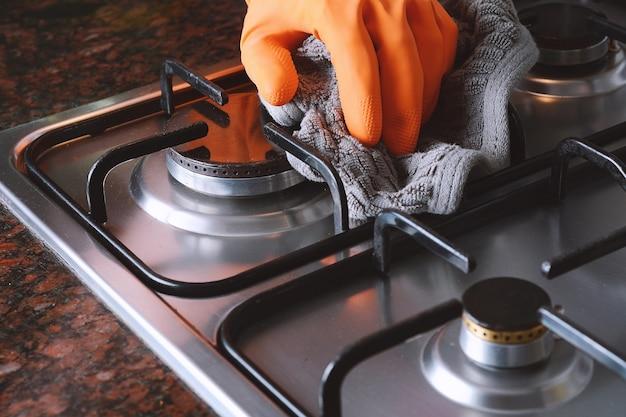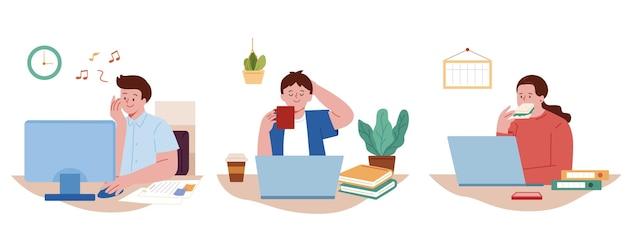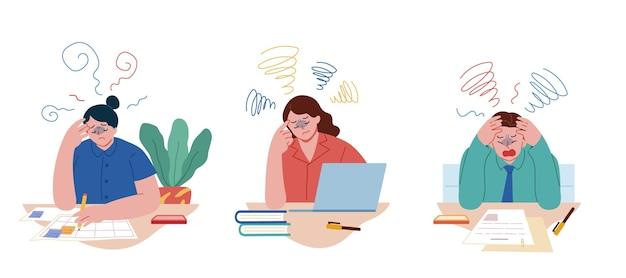Have you ever found yourself standing in a pool of water while brushing your teeth or washing your hands? If your bathroom sink won’t drain, but there’s no visible clog, it can be frustrating and confusing.
Don’t worry, though, you’re not alone. There are several reasons why your sink might not be draining properly, and luckily, most of them can be fixed without professional help.
In this comprehensive guide, we’ll explore common causes of sink blockages and how to troubleshoot them step by step.
From airlocks to hidden clogs, we’ll cover everything you need to know to get your sink flowing freely again.
So, let’s dive in and find out why your sink won’t drain (but it’s not clogged)!
Bathroom Sink Won’t Drain But Not Clogged: Possible Causes and Solutions
Did you know that a bathroom sink that won’t drain but not clogged is a common plumbing problem? While a clogged sink is often caused by hair, soap, or other debris blocking the drain, there are other reasons why your sink might not be draining properly, even if it doesn’t appear to be clogged.
Insufficient Water Pressure
If your sink has poor water pressure, the water may not be able to flow down the drain as quickly as it should. This can cause water to back up in the sink, making it look like the sink is clogged when it’s really a water pressure issue. To diagnose this problem, check other faucets in your home to see if they have low pressure as well. If this is the case, there may be an issue with your plumbing system that requires a plumber’s help.
Airlock
Another possible issue is an airlock. Air can get trapped in the pipes, preventing water from flowing through. This can cause your sink to drain slowly or not at all. You can try fixing this issue by running water from other faucets to see if it removes the airlock. If this doesn’t work, you may need to use a plunger to try to shift the blockage.
Blocked Vent Pipe
Your sink may also have a blocked vent pipe. This pipe helps regulate the pressure in your plumbing system and allows air to escape. If it’s blocked, then water won’t be able to drain properly from your sink. You can try to locate the vent pipe on your roof and clear any blockages or debris. If you’re not comfortable doing this, it’s best to call a professional plumber to do it for you.
Broken or Faulty Pipes
Finally, your sink may not be draining because there is a broken or faulty pipe. This is a more serious issue that requires the help of an experienced plumber. A broken pipe can cause leaks and water damage, so it’s crucial to address it as soon as possible.
In conclusion, a bathroom sink that won’t drain but not clogged can be caused by various issues such as insufficient water pressure, an airlock, a blocked vent pipe, or broken/faulty pipes. Diagnosing and fixing the problem quickly is essential to avoid further damage to your plumbing system. If you’re not sure what’s causing the problem, don’t hesitate to call a professional plumber for help.
Sink Not Draining Air Lock
If you’ve ever experienced a sink that won’t drain even though it’s not clogged, then you might be dealing with an airlock. An airlock happens when air gets trapped in the pipes, which prevents water from flowing through them. Luckily, fixing an airlock is quite easy, and you can do it yourself without calling a plumber.
Identifying an Airlock
The first step in fixing an airlock is identifying that it’s the actual issue. If you notice that your sink won’t drain, but you can still see water in it, then there’s most likely an airlock. Other signs include gurgling sounds when you try to drain the sink or noticing bubbles in the bowl. If the sink is still draining, but slowly, there’s a high possibility of a partial airlock.
Fixing an Airlock
To fix an airlock, you’ll need to follow these easy steps:
1. Turn Off The Water Supply
Start by turning off the water supply, whether it’s the faucet or the main valve. Cutting the water supply is essential to prevent water from entering the pipes while you’re fixing the airlock.
2. Cover The Overflow
Next, cover the sink overflow with a cloth or a stopper. The overflow helps air to escape and allows proper drainage. Blocking it will help to build up pressure in the pipes, making it easier for the air to escape.
3. Fill The Sink
Fill your sink with some water. Fill it as high as you can. The water will apply pressure on the air and force it to escape through the sink. This process will only work if you’ve blocked the overflow.
4. Remove The Blockage
Remove the blockage on the overflow and turn on the water supply. The water should start to drain out freely, and that’s it. You have successfully fixed the airlock!
An airlock is a common issue that can occur in any sink that’s not clogged. If you find yourself dealing with this problem, don’t panic. Follow the above simple steps to fix it yourself, saving you time and money on expensive plumbing services. Remember to cover the sink overflow, fill the sink with water, and allow the water to flow out of the sink. If you do it right, the airlock should disappear, and your sink should start draining correctly.
Double Sink Won’t Drain – No Clog!
If you are facing the issue of a double sink not draining but with no apparent clogs, you’re not alone. A clogged sink is likely the root cause of drainage problems, however, it’s not always the case. In this section, we will discuss what could cause a double sink to not drain without any clogs and how to diagnose and fix the issue.
Common Reasons for Double Sink Not Draining Without Clogs
Air Vent Blockage
A double sink is typically connected to a single drainpipe, which usually has an air vent. The air vent prevents water from being trapped as it flows down the drain. If the air vent is blocked, it can cause the sink to drain slowly or even stop the flow of water completely. To check for air vent blockage, remove the drain cover and use a flashlight to look down the drain. You may see debris or other items blocking the vent.
Faulty Drainpipe
If the drainpipe is damaged or broken, it can cause the water to back up in the sink, even if there are no visible clogs. A corroded drainpipe or a pipe that has a break in it can cause water to back up. You may need to replace the damaged part of the drainpipe to solve the issue.
Malfunctioning Garbage Disposal
A garbage disposal unit that is not working properly can cause sink drainage issues. If the disposal unit is not powerful enough to break down waste, it can cause blockages in the pipes, which can make the sink not drain properly. Try to flush the garbage disposal with hot water and check if it needs to be repaired or replaced.
How to Fix a Double Sink That Won’t Drain
Step 1: Plunge the Sink
If the issue is not severe, try to plunge the sink with a plunger. Ensure to fill the sink with enough water to cover the drain partially, then block the second drain hole with a wet cloth or a sink stopper. Then, vigorously plunge the drain to create suction. If this works, the sink should drain correctly.
Step 2: Check the Garbage Disposal Unit
If plunging the sink has no effect, check the garbage disposal unit. Ensure it is not clogged by putting on protective gloves and dislodging any visible wastes inside. Run the garbage disposal unit with running water for a few minutes and flush it thoroughly with hot water.
Step 3: Clear the Air Vent
If the garbage disposal isn’t part of the problem, the air vent is another area to check for blockage. If you find debris or blockage, try using a plumbing snake to remove it.
Step 4: Inspect the Drainpipe
Lastly, investigate the drainpipe for any visible damage. If needed, remove the P-trap located under the sink to inspect further down the pipes. You will be able to see any visible damage or corrosion to the pipes and replace it if necessary.
In conclusion, a double sink not draining without clogs can be a frustrating problem. However, with these steps, you can easily diagnose and fix the problem yourself!
What Causes a Sink Not to Drain
If you’re facing a problem where your bathroom sink won’t drain but not clogged, there could be several reasons behind it. In this section, let’s explore some possible causes for this issue:
Faulty Stopper
A common reason behind a sink not draining could be a faulty stopper. If the stopper isn’t working correctly, it won’t enable water to exit the sink. A quick fix would be to replace the stopper or adjust it, depending on its condition.
Clogged Drain
Even if your sink isn’t blocked, there could still be a clog in the drain that restricts water flow. A clog in the P-trap fixture or the pipe underneath the sink could be a probable reason. Using a plunger or applying a mixture of vinegar and baking soda could be helpful in unclogging the drain.
Build-up of Hair and Soap Scum
Slowly draining water could also be due to the accumulation of hair and soap scum on the sink stopper or the drain itself. Over time, these substances can build up and hinder water flow. Try to clean the sink stopper and the drain frequently to avoid this issue.
Jammed Garbage Disposal
If your bathroom sink has a garbage disposal, it could be causing the issue. If the garbage disposal is jammed, it will affect the sink’s draining ability. Use a flashlight to inspect the garbage disposal and remove any obstruction.
Mechanical Failure
Sometimes, a sink not draining could simply be a result of mechanical failure. Maybe the sink’s internal components or the pipes have deteriorated, causing the water to drain slowly or not at all. In such a case, it’s best to call a professional plumber to diagnose and repair the problem.
In conclusion, several reasons could explain why your bathroom sink isn’t draining, even if it’s not clogged. Follow the steps mentioned above to resolve the issue, or seek professional assistance if the problem persists. A fully functional bathroom sink is crucial for maintaining hygiene and can add comfort to your daily routine.
Bathroom Sink Clogged Behind Wall
Have you ever noticed that your bathroom sink won’t drain, even though it’s not clogged? It’s a common problem for many people, and there are many reasons why this could be happening. One reason is that the sink could be clogged behind the wall. Here are some tips to help you identify and fix this issue.
Identify the Problem
The first step is to confirm that the sink is indeed clogged behind the wall. You can do this by running some water in the sink and checking if the water is coming out of the wall or not. If it’s not coming out, then the sink is likely clogged behind the wall. You can also try sticking a long object down the drain, such as a wire hanger, to see if you can feel anything blocking the way.
Find the Source of the Clog
Once you’ve identified that the sink is clogged behind the wall, the next step is to find the source of the clog. Most likely, the clog is caused by hair, soap scum, or other debris that has accumulated in the pipe over time. If you can, try to remove the debris using a plunger or a drain snake.
Call a Professional
If you’re not able to remove the clog yourself, it’s best to call in a professional plumber to do the job. They will have the expertise and tools needed to get the job done quickly and efficiently. It’s important to address the clog as soon as possible to prevent any further damage to your pipes or sink.
Prevention is Key
To prevent a clogged sink behind the wall in the future, it’s important to take preventative measures. Regularly cleaning your sink and drain with a mixture of vinegar and baking soda can help prevent clogs from forming. Also, avoid pouring grease or oil down your sink, as it can solidify and lead to clogs.
In conclusion, a clogged bathroom sink behind the wall can be a frustrating issue to deal with, but it’s not impossible to fix. By identifying the problem, finding the source of the clog, and taking preventative measures, you can ensure that your sink stays clear and your pipes stay healthy. If all else fails, don’t hesitate to call in a professional to take care of the problem.
Kitchen Sink Won’t Drain But Not Clogged
If your kitchen sink is not draining properly, it can be frustrating, especially if it’s not clogged. Don’t worry; there are many reasons why your kitchen sink won’t drain, and most of them are easy to fix without calling a plumber.
Check the Garbage Disposal
If you have a garbage disposal, that could be the issue. Turn it on and check if it’s running. If it’s not, try resetting it by pressing the reset button located at the bottom of the disposal. If the garbage disposal is not the issue, move to the next step.
Check the P-Trap
The P-trap is a curved pipe located under the kitchen sink, and it’s responsible for trapping debris that could cause a clog. If the P-trap is clogged, it could be the reason why the water is not draining. To check if it’s clogged, place a bucket under the trap and remove it. Clean out any debris, and check if your sink drains properly. If the P-trap is not the issue, move to the next step.
Check the Air Gap
An air gap ensures the integrity of your home’s drainage system by preventing dirty water from flowing back into your clean water supply. Depending on the configuration of your sink, your air gap is located on your sink or dishwasher. If your air gap is clogged, remove the cap, clean out any debris, and reassemble it. Test if your sink is draining correctly.
You don’t have to be a plumber to fix your kitchen sink if it’s not draining correctly. Check the garbage disposal, P-trap, and air gap to ensure that they’re not clogged. If none of these steps works, you may have a more severe plumbing issue that requires a professional’s attention. Hopefully, this guide has been helpful to you.
Bathroom Sink Drains Slowly: Not Getting Air
If you’re experiencing a slow-draining bathroom sink, it could be because of a blocked air vent pipe that prevents air from entering the plumbing system. A plumbing system needs air to function correctly, so if air can’t enter, it can cause the water to drain slowly.
What Causes a Blocked Air Vent Pipe
There are several reasons why your air vent pipe could be blocked. Mostly, it could be because of outside debris such as leaves, bird feathers, or twigs that entered the pipe. Similarly, rodents or insects may build nests or colonies inside the pipe, which could obstruct the airflow. It’s common for bathroom sink vents to get blocked because of their small size, so debris can easily wedge its way in.
What Can You Do to Fix It
Before you call a plumber, try fixing the air vent yourself by following these simple steps:
- Locate the air vent through the roof.
- Remove any debris blocking the air vent pipe.
- Flush the pipe with lukewarm water if necessary.
If removing the debris didn’t solve the problem, call a plumber to assess the situation. They have specialized equipment like cameras to detect any blockages and determine the cause of the slow drainage.
A simple blocked air vent pipe could cause your bathroom sink to drain slowly, but with a little effort, you can fix the problem yourself. If you’re not confident about fixing it yourself, don’t hesitate to call a professional. Remember, a well-maintained plumbing system not only ensures smooth functioning but also saves you money on costly repairs in the long run.
Why is my bathroom sink not draining but pipes clear
If you find yourself in a situation where the water in your bathroom sink is not draining as fast as it should, even though your pipes are clear, don’t panic just yet. The good news is that this problem is quite common and can be easily fixed.
Possible Causes
-
Hair and soap scum buildup: Over time, hairs and soap scum can accumulate in your bathroom sink’s drain. This build-up can cause the sink to drain slower or not at all.
-
Broken or faulty stopper assembly: If you have a stopper assembly in your sink, it can sometimes break or become faulty, which can also hinder the water from draining properly.
-
Clogged air vent: Air vents are critical components of plumbing systems. If the air vent is clogged, it can make water-draining difficult.
-
Defective drainpipe: The drainpipe is the pipe that carries water from your sink to the main sewer line. If the pipe is blocked, clogged, or defective, it can cause water to back up and drain slowly.
-
Corrosion: Rust, corrosion, and other mineral deposits can build up in pipes, causing them to narrow, which reduces water flow and may even lead to leaking.
Fixing the Issue
To fix this problem, you can try the following solutions:
-
Remove the drain stopper and clean it: First, remove the stopper assembly of your sink’s drain and clean it. Hair and soap scum often accumulate around the stopper, causing obstruction.
-
Plunge the sink: Using a plunger can be an effective solution if the problem persists. Make sure there is enough water in the sink to cover the plunger’s head completely.
-
Snake the drain: If plunging doesn’t work, try snaking the drain. You can use household items like wire hangers or call a professional plumber.
-
Check the air vent: If your sink still doesn’t drain as expected, try checking the air vent. If it’s blocked, clean it.
-
Check the pipes: If the other solutions don’t work, consider inspecting your drainpipes for corrosion or other damage.
By understanding the causes of bathroom sink draining problems, you can take steps to fix the issue and keep your plumbing system functioning correctly. If the problem persists, don’t hesitate to call a professional plumber for help.
How to Fix a Bathroom Sink That Won’t Drain
Dealing with a bathroom sink that won’t drain can be frustrating, especially when it’s not caused by a clog. The good news is that fixing the problem isn’t complicated, and most people can do it themselves with just a few tools. If you’re dealing with a bathroom sink that won’t drain, here’s what you can do:
Check the Pop-Up Assembly
One of the most common reasons why the bathroom sink won’t drain is a faulty or worn-out pop-up assembly. This is the mechanism that connects the sink drain stopper to the lift rod on the back of the faucet. Over time, it can become loose or damaged, preventing water from draining properly.
To check if the pop-up assembly is the culprit, remove the sink stopper and inspect the mechanism underneath. If you notice any damage or wear and tear, you may need to replace the pop-up assembly.
Clean the Drain
If the pop-up assembly isn’t the problem, the next step is to clean the drain. Over time, bathroom sinks can accumulate hair, soap scum, and other debris that can clog the drain. You can use a plunger or a drain snake to remove any buildup. However, if the drain is still clogged after using these tools, you may need to use a chemical drain cleaner to dissolve the blockage.
Check the Vent
The vent is responsible for allowing air to flow into the drainpipes to prevent suction that can prevent water from draining. If something blocks the vent or if it’s damaged, it can create a vacuum and prevent water from draining from the sink. Check the vent for any blockages and clear it if there’s any debris.
In conclusion, a bathroom sink that won’t drain can be annoying, but these simple hacks will help most people fix the problem themselves. If you’ve tried all the above fixes and still have drainage issues, be sure to call a professional plumber to take a look. Don’t forget to maintain your drains regularly to prevent future clogging problems.



